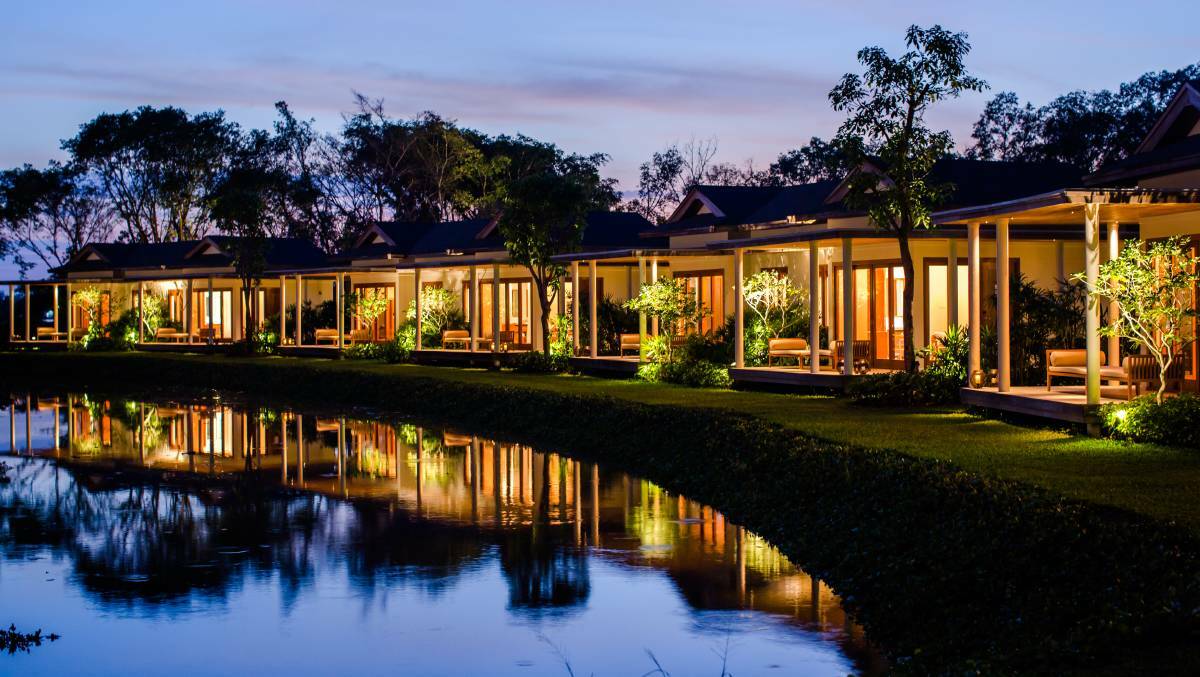It’s early on a Saturday morning and the sun is only just starting to rise when I wake in my room beside the Hau River, in the Mekong Delta.
Create a free account to read this article
$0/
(min cost $0)
or signup to continue reading
But in this region of southwestern Vietnam, this is no time for a lazy sleep-in. I need to be on a boat to the area’s largest floating market by 7am, or risk missing the peak of trading activity and having fresh local produce for breakfast.
For the traders, who have already been there a few hours, the stakes are much higher. The fate of about 21.5 million people in this region rests largely on the vast maze of rivers, swamps and islets that form the Mekong Delta. Agriculture provides food security and a livelihood for many, with rice production and farming two dominant industries and the waterways used to transport and sell goods. Rice sediment turns the water murky brown, or as locals say, “the colour of money”.
Others rely on the water to make a different sort of living, and one of those – Can Tho River Tour guide Johnny – is waiting for me on a boat outside Azerai Can Tho, a luxury five-star resort on a private islet in the delta.

As we cruise towards Cai Rang Floating Market, people in the houses that line the waterways emerge to bathe and wash their clothes in the river. Many of the houses are only accessible by boat and some are so close to the water that even the slightest rise in the water level could cause chaos, but the locals choose to look on the bright side.
“When it floods, you don’t have to go fishing,” Johnny jokes.
“The fish come directly into the kitchen.”
Can Tho, the city at the epicentre of the Mekong Delta, is well-developed, but Johnny tells me much of the material used in its construction came from the river. Still today, there’s an issue with thieves stealing sand from the riverbeds, causing currents to strengthen and the land to sink.
The floating market is a sight to behold, but it too is under threat from the growing ease of doing business on dry land. Ten years ago, Johnny tells me, there were about 1000 boats lining a one-kilometre stretch of water and selling mainly fresh produce. These days, there are about 300.
We stop at a pineapple boat and while standing on the deck to eat breakfast, I learn a little about the sacrifices people make to earn a living on the water. Traders with children have to leave the kids with family members so they can go to school. As for entertainment on the boats, “there is no wi-fi, only a wife”, Johnny says.
After sampling some local fruit at a river-side orchard, Johnny and I jump off the boat at someone’s home and pay the homeowner a small fee for the inconvenience before making stops at a rice noodle house, a cocoa farm and an old house featured in the French film The Lover.
It’s an enjoyable but action-packed day, so it’s something of a relief to arrive back at Azerai Can Tho. Tucked under a shaded canopy of banyan trees, it has 60 rooms that look out to either the river, lake or the surrounding gardens and trees.
The resort offers a range of excursions, but if your goal is just to relax there is plenty on offer, even when it rains heavily as it did for most of my three-night stay. One afternoon, I relaxed at the resort’s spa with a Balinese massage and spent some time unwinding in the “thermal zones”, which include features like tropical rain-shower rooms. Aside from the open spaces and views of the Mekong Delta, the resort also has a lounge and bar that’s open all day, a gym, tennis court, and pilates and yoga studios.
One of the restaurants, The Grill, serves only dinner, but beside the infinity pool you’ll find The Cafe, which is open for all meals. The buffet breakfast provides plenty of choice and the “Flavours of the Mekong” dinner menu offers an insight into the locals’ penchant for strong flavoured food. But one meal – a banh tam coconut noodle salad I have for lunch – is the clear standout. Executive chef Sagar Iyer tells me it’s a traditional dish locally, but it has largely been forgotten. It has a number of ingredients including shrimp and cassava, but it’s the coconut sauce that gives it a unique and satisfying flavour.
The meal is a good metaphor for the Mekong Delta itself – a place brimming with tradition and variety that’s well worth seeing before some of what makes it unique, like the floating markets, disappear.
By: Blake Foden




